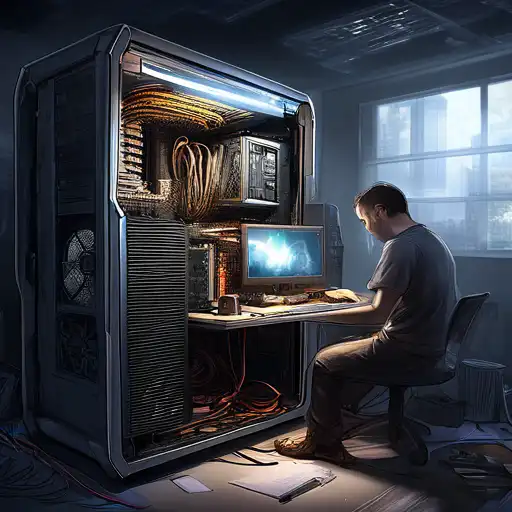Introduction to PC Building
Building your own PC can be a rewarding experience, offering both personal satisfaction and the opportunity to create a machine that perfectly fits your needs. Whether you're a gamer, a content creator, or just someone looking for a custom computing solution, this guide will walk you through the basics of assembling your own computer.
Why Build Your Own PC?
Building your own PC allows you to customize every component to your specific requirements, often resulting in better performance and value than pre-built options. Plus, it's a great way to learn about how computers work.
Essential Components for Building a PC
Before you start, you'll need to gather all the necessary components. Here's a list of the essential parts:
- Processor (CPU)
- Motherboard
- Memory (RAM)
- Storage (SSD or HDD)
- Power Supply Unit (PSU)
- Case
- Graphics Card (GPU) - if not integrated into the CPU
Choosing the Right Components
Selecting the right components is crucial for building a PC that meets your needs. Consider factors like performance, compatibility, and budget when making your choices.
Step-by-Step Guide to Assembling Your PC
Now that you have all your components, it's time to start building. Follow these steps to assemble your PC:
- Prepare your workspace and gather your tools.
- Install the CPU onto the motherboard.
- Install the RAM into the appropriate slots.
- Mount the motherboard inside the case.
- Install the power supply.
- Connect all necessary cables.
- Install your storage devices.
- Install the graphics card if you're using one.
- Close the case and connect your peripherals.
Installing the Operating System
After assembling your PC, the next step is to install an operating system. Whether you choose Windows, Linux, or another OS, make sure to follow the installation instructions carefully.
Tips for First-Time Builders
Building a PC for the first time can be daunting, but here are some tips to help you through the process:
- Take your time and don't rush.
- Refer to the manuals that come with your components.
- Watch tutorial videos if you're unsure about a step.
- Ensure all components are compatible before purchasing.
Maintaining Your PC
Once your PC is up and running, regular maintenance will keep it running smoothly. This includes cleaning dust from the components, updating drivers, and monitoring system temperatures.
Conclusion
Building your own PC is a challenging but rewarding project that can save you money and give you a deeper understanding of how computers work. With the right preparation and patience, anyone can assemble their own custom computer.
For more information on choosing components, check out our guide to choosing PC components.
